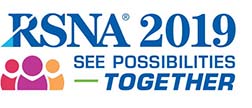

Awards
Trainee Research Prize - Medical Student
Participants
Chloe G. Cross, BSC, Salt Lake City, UT (Presenter) Nothing to Disclose
Allison Payne, PhD, Salt Lake City, UT (Abstract Co-Author) Nothing to Disclose
Gregory W. Hawryluk, Salt Lake City, UT (Abstract Co-Author) Nothing to Disclose
Riley Haag-Roeger, Salt Lake City, UT (Abstract Co-Author) Nothing to Disclose
Rahul Cheeniyil, Salt Lake City, UT (Abstract Co-Author) Nothing to Disclose
Henrik Odeen, PhD, Salt Lake City, UT (Abstract Co-Author) Nothing to Disclose
Satoshi Minoshima, MD, PhD, Salt Lake City, UT (Abstract Co-Author) Consultant, Hamamatsu Photonics KK; Research Grant, Hitachi, Ltd; Research Grant, Nihon Medi-Physics Co, Ltd;
Donna J. Cross, PhD, Salt Lake City, UT (Abstract Co-Author) Nothing to Disclose
Yoshimi Anzai, MD, Salt Lake City, UT (Abstract Co-Author) Nothing to Disclose
chloegcross@gmail.com
PURPOSETo develop observer-independent MRI quantification of blood spinal cord barrier (BSCB) permeability after magnetic resonance guided focused ultrasound (MRgFUS) in spinal cord injury (SCI).
METHOD AND MATERIALSRats (n=21) underwent T8-T10 laminectomy and extradural compression of the spinal cord (23g weighted aneurysm-type clip, 1 min). High-resolution T1w MR images (3T Siemens, 3D VIBE, FOV=162 mm162 mm×45 mm, res=0.4 mm×0.4mm×0.8 mm interpolated to 0.2 mm×0.2 mm×0.4 mm, TR/TE=6.21/2.94 ms, FA=10°) were obtained pre-MRgFUS without contrast, pre-MRgFUS half-dose contrast, and post-MRgFUS full-dose contrast (Gadoteridol, 0.25 mL/kg, 0.1 mL saline). Rats (n=11) were placed on a MRgFUS system (256-element phased-array transducer, f=940 kHz, focal depth=10cm, intensity FWHM=1.8×2.5×10.9 mm3), injected Optison microbubbles (0.2 mL/kg, 0.1 mL saline) and received 3 doses in 4 locations, 2 mm apart (25 ms bursts, 1 Hz pulses for 3 min, 1.0-2.1 MPa peak pressure). Shams (n=10) received equivalent procedures with no sonications. Spinal cords were segmented manually or semi-automatically using the Spinal Cord Toolbox. SCI rats post-MRgFUS average ROI intensity were normalized to pre-MRgFUS half-contrast. Non-injured rats (n=3) were administered Evans Blue post-MRgFUS and spinals cords were sectioned into 5 mm x 7 samples. Absorbance was measured by spectrophotometry at 655 nm per mg tissue and correlated to post-MRgFUS ROIs normalized to pre-MRgFUS.
RESULTSSemi-automatic segmentation reduced time by 95% and showed no difference to the manual method (Pearson = 0.92, p=.00001, n=71 regions). Evans Blue absorbance correlated to image intensity in MRgFUS and control ROI (Pearson = 0.82, p=.02, n=6). Increase in signal intensity in MRgFUS ROI relative to control was seen in all SCI MRgFUS rats (10.65ą12.4%, range: 0.96-43.9%, n=11). SCI sham MRgFUS revealed no change (0.63ą0.52%, range: 0.15-1.63%, n=10). This result was significant between both groups (p=.003).
CONCLUSIONSemi-automatic segmentation of the rat spinal cord was successful. Evans Blue absorbance was correlated to image intensity values in non-injured rats. Quantitative methods are sensitive for detection of BSCB opening induced by MRgFUS in the SCI animal model.
CLINICAL RELEVANCE/APPLICATIONMost potential therapeutics for SCI require invasive (surgery) or semi-invasive (intrathecal) delivery. The use of MRgFUS to open the BSCB and deliver therapeutics will facilitate recovery from SCI.